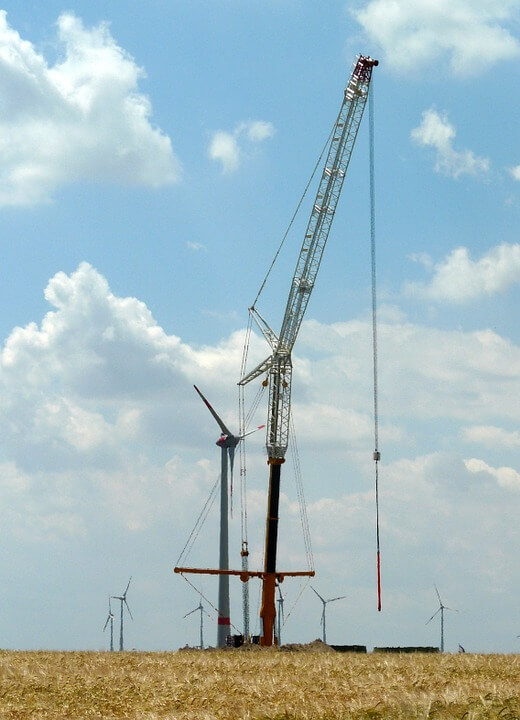Competition is forcing wind-turbine OEMs to intensify the pace of innovation to lower LCOE, according to the latest research from MAKE. To improve competitiveness in auctions across global markets, wind-turbine OEMs have accelerated the pace of new product introductions, often with larger rated turbines and longer rotors. OEMs will exploit design margins, optimize investments in the supply chain, and deliver lower LCOE for asset owners, finds MAKE.

According to research from MAKE, U.S. wind developers and OEMs are leveraging the longer PTC cycle to get FAA (Federal Aviation Administration) approvals for turbine tip heights greater than 500 feet (152.4m) — particularly where taller towers and longer rotors on 4.XMW platforms show favorable LCOE.
The researchers have found that the competitive landscape — namely the transition in many markets globally to auction systems — are resulting in shorter commercial life cycles of turbine platforms. As a result, OEM business plans and CAPEX investment must incorporate shorter platform and product lifecycle assumptions, with higher volumes offered in auctions to offset those investments.
Wind-turbine platform choices are dominated by regional demand profiles and wind resource conditions. China and India are dominated by 2.0-2.5MW turbine models with specific power ratings of 180-220 w/m2 due to ultra-low wind speed regimes.
First generation 4.XMW platforms are inching toward 5.XMW platforms with power uprates in generators, an increase in gearbox torque ranges, and control system optimizations. The 5.XMW turbines will feature rotor sizes of 160-175+m and towers taller than 180m.
Developers in major markets such as the U.S., historically dominated by high capacity factor turbines, are increasing their deployment of larger rated turbines. The trend will ramp up in the United States post-2020, when 4.XMW turbines see siting in multiple states.
Logistics and transportation are one of the crucial challenges deterring the adoption of larger rotors. The industry are expected to consider two parallel developments tracks for blades on next-generation platforms, one with conventional cost-effective single piece technology and the other with split blades for logistic constrained sites.
Offshore projects do not face the same logistics barriers as onshore projects, as the supply chain is built closer to ports. Developers over the past year have submitted “zero subsidy” bids for offshore projects. Turbines procured by winning developers will have an unprecedented range of 12-15+MW with massive rotors ranging 200 to 250 m.
MAKE’s Next Generation Wind Turbine Models research note is a 50+ page presentation containing 80+ charts, tables and graphs providing MAKE’s in-depth analysis of future wind turbine product offerings from leading OEMs. The Research Note presents the key drivers and product development strategies, as well as analyses future wind turbine technology demand drivers across global markets.
Filed Under: News, Projects




